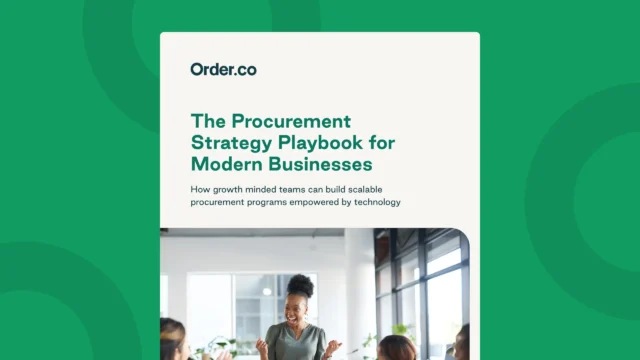How to Create a Virtual Card With a Set Budget and Expiration for a Marketing Campaign

How to Create a Virtual Card With a Set Budget and Expiration for a Marketing Campaign
Modern marketing campaigns are complex, fast-moving operations. From managing ad spend across multiple platforms to paying freelancers for creative assets and subscribing to the latest analytics tools, the flow of money is constant and difficult to track. Handing out a physical corporate card creates unacceptable risks of overspending and fraud, while manual reimbursement processes slow your team to a crawl.
There is a better way. Virtual cards with custom controls empower marketing teams with the agility they need while giving finance leaders the visibility and security they demand. By creating digital cards with specific spending limits and expiration dates for each campaign, vendor, or employee, you can eliminate rogue spend, automate reconciliation, and secure your financial data.
This guide provides a comprehensive overview of how to issue a virtual card with an expiration date and a set virtual card campaign budget. We’ll cover the strategic benefits, a step-by-step process for creating them, and how a unified platform like Order.co provides unmatched control over the entire purchasing lifecycle.
Download the free ebook: The Procurement Strategy Playbook
Can I issue a virtual card with a specific expiration date and budget?
Yes, you can absolutely issue a virtual card with an expiration date and a precise budget. Modern procurement and spend management platforms are specifically designed to provide this level of granular control. This capability allows you to create unique, digital-only card numbers instantly, each with its own set of rules that dictate how, where, and when it can be used.
Unlike traditional corporate cards that offer a static credit limit and a multi-year expiration, virtual cards are dynamic. You can set a hard cap on the total amount that can be charged, define a recurring budget (e.g., $1,000 per month for Google Ads), and set the card to automatically deactivate on a specific date. This ensures that once a campaign ends or a subscription is canceled, the card becomes unusable, preventing forgotten charges and reducing security risks.
Why use virtual cards for marketing campaigns?
Virtual cards provide marketing teams with unmatched control, security, and agility for managing campaign expenses across various channels and vendors. They transform the chaotic process of campaign spending into a streamlined, transparent, and secure operation, freeing your team to focus on results instead of administrative tasks.
Tightly control your virtual card campaign budget
The most immediate benefit of virtual cards is ironclad budget enforcement. Instead of tracking expenses in a spreadsheet and hoping for the best, you can set proactive spending controls that make it impossible to go over budget.
For every marketing initiative, you can issue a dedicated virtual card with a fixed budget. If a campaign has a $5,000 ad spend limit, the card assigned to that ad platform will decline any transaction that pushes the total over that amount. This is crucial for managing spend with vendors that charge based on usage or clicks. It also allows you to allocate funds with precision, creating separate cards for different channels, freelancers, or software subscriptions to get a clear, real-time view of your spend management.
Enhance security and prevent fraud
Marketing teams often work with numerous external vendors, from freelance writers to new ad-tech platforms. Sharing a physical card number across these channels creates significant security vulnerabilities. A single data breach at one vendor could compromise your primary account, leading to fraudulent charges and a logistical nightmare of canceling cards and updating payment information everywhere else.
Virtual cards solve this problem in several ways:
- Vendor Locking: You can lock a virtual card to a single merchant. The card issued for LinkedIn Ads will only work on LinkedIn, making it useless to a fraudster who tries to use it elsewhere.
- Single-Use Cards: For one-off purchases, like buying stock photos or a domain name, you can use single-use virtual card marketing. This card number becomes invalid the moment the transaction is complete, offering the highest level of security.
- Instant Deactivation: If you stop working with a vendor or an employee leaves the company, you can freeze or delete their assigned virtual card in seconds. This immediately cuts off access and prevents any future unauthorized charges.
Streamline expense tracking and reconciliation
One of the biggest administrative burdens for finance and marketing teams is month-end reconciliation. Chasing down receipts and figuring out which expense belongs to which campaign can take days of manual effort, especially when all transactions are lumped together on a single credit card statement.
Virtual cards transactions can be auto-coded with critical accounting information. When you create a card, you can tag it with the campaign name, department, GL code, and location. This data is automatically captured with every transaction, eliminating the need for manual coding. This level of procurement automation feeds directly into your accounting system, turning a week of tedious reconciliation into a simple review process.
Empower team members with spending autonomy
When your team has to wait for a manager to make every small purchase, it creates bottlenecks that stifle creativity and speed. Virtual cards empower your team members with the autonomy to purchase what they need, but within strictly defined guardrails.
A marketing manager can issue a virtual card to a social media specialist with a $500 monthly budget for boosting posts or to a content writer with a $200 budget for research tools. This allows employees to act quickly without having to file expense reports or borrow a manager's card. It’s efficient and ensures that all spending remains compliant with company policy and within pre-approved budgets.
How to create a virtual card for your next campaign: A step-by-step guide
Creating a virtual card is a simple process within a procurement automation platform. You typically need to define the card's purpose, set its financial limits, assign it to a user or vendor, and generate the card details instantly.
Step 1: Choose the right platform
Not all virtual card providers are created equal. To truly manage marketing spend effectively, look for a platform that offers more than just card creation. Key features to look for include instant card generation, fully customizable spending controls (budgets, expirations, vendor locks), direct integrations with your accounting or ERP system, and real-time reporting dashboards. For the most robust control, choose an end-to-end procurement software like Order.co.
Step 2: Define the purpose and spending rules
Before creating the card, determine its exact purpose. Is this for a recurring monthly subscription to an SEO tool? A one-time payment to a videographer? Or the total ad spend budget for a quarter-long product launch? Your answer will determine the rules you set.
Next, establish the virtual card campaign budget. If it’s for a recurring expense, you can set a monthly or yearly limit that refreshes automatically. For a project-based expense, you can set a total budget that does not renew. This flexibility ensures the financial controls match the specific needs of the purchase.
Step 3: Assign the card and generate details
Once the rules are set, you can assign the card to a specific employee, a department budget, or a vendor profile within your system. The platform will then instantly generate a unique 16-digit card number, CVV code, and the expiration date you defined. These details can be securely copied and used for any online purchase immediately.
Step 4: Monitor spending and deactivate when finished
With virtual cards, spend visibility happens in real time. Managers and finance teams can see every transaction as it occurs, track it against the card’s budget, and receive alerts for declined transactions. This allows for proactive budget management rather than reactive damage control.
Once a project is complete, the card’s budget is exhausted, or its expiration date is reached, it automatically becomes inactive. For added security, you can also manually freeze or delete a card at any time with a single click, ensuring complete control over every dollar spent. This is a core benefit of moving toward a centralized purchasing model.
What's the difference between single-use and multi-use virtual cards?
A single-use virtual card is designed for one transaction only and becomes invalid immediately after, while a multi-use virtual card can be used for multiple purchases until its budget or expiration date is reached. Understanding when to use each type is key to maximizing both security and efficiency.
When to use a single-use virtual card
A single-use card is your best defense when making a purchase from a new or unfamiliar vendor. Because the card number is good for only one authorization, the risk of it being stolen and used for fraudulent charges is completely eliminated.
Use single-use cards for:
- One-off purchases of digital assets like stock photos, fonts, or video clips.
- Paying an application fee or making a deposit.
- Buying from a vendor you don't plan to use again in the future.
- Any situation where you want the absolute highest level of payment security.
When to use a multi-use virtual card
A multi-use virtual card is the workhorse for your ongoing and recurring marketing expenses. It provides the convenience of a traditional card but with the added layer of custom controls that protect your budget and data.
Use multi-use cards for:
- Monthly or annual software subscriptions (e.g., HubSpot, Canva, Semrush).
- Recurring ad spend with platforms like Google, Meta, or LinkedIn.
- Assigning a budget to an employee for ongoing expenses over a specific period.
- Paying a trusted freelancer or agency on a retainer.
How Order.co brings simplicity and convenience to marketing spend
Order.co integrates virtual card creation directly into a comprehensive procurement and finance automation platform, giving you control that starts before the purchase is even made. While many standalone fintech companies offer virtual cards, they only address the payment portion of the spending lifecycle. This leaves you vulnerable to out-of-policy purchases and still requires manual work to connect spending to budgets.
Order.co provides a unified solution that connects every step of the process:
- Pre-Approved Purchasing: With Order.co, every purchase starts with a request that is routed through a custom approval workflow. This ensures that spending is aligned with budgets before a payment method is even issued. This proactive approach eliminates rogue spend at its source, something standalone card providers can’t offer.
- Automated Reconciliation: Because every transaction starts as an approved order within our system, all the necessary data is captured from the beginning. Transactions are automatically reconciled, and everything rolls up into a single, consolidated bill, dramatically reducing the AP team's workload. You can stop worrying about tedious purchase order processing and focus on strategy.
- Strategic Sourcing and Payments: Order.co does more than just manage payments; it helps you optimize them. Order.co's AI-powered sourcing can find you better prices on the products and services you need, delivering direct procurement savings. It also gives you total payment flexibility, allowing you to pay any vendor via their preferred payment method, all from one place.
Get started with controlled campaign spending
Virtual cards with custom budgets and expiration dates are no longer a nice-to-have; they are an essential tool for any modern marketing team that wants to move fast without breaking the bank. They provide the perfect balance of empowerment and control, enabling agile execution while giving finance leaders the security and real-time visibility they need to manage the business effectively.
By adopting a unified platform that integrates virtual cards with your entire procurement process, you can solve for payment security and unlock a new level of operational efficiency across your organization.
Ready to bring order to your marketing spend? Schedule a demo to see how Order.co can simplify buying and payments for your business.
Get started
Schedule a demo to see how Order.co can simplify buying for your business.
"*" indicates required fields



